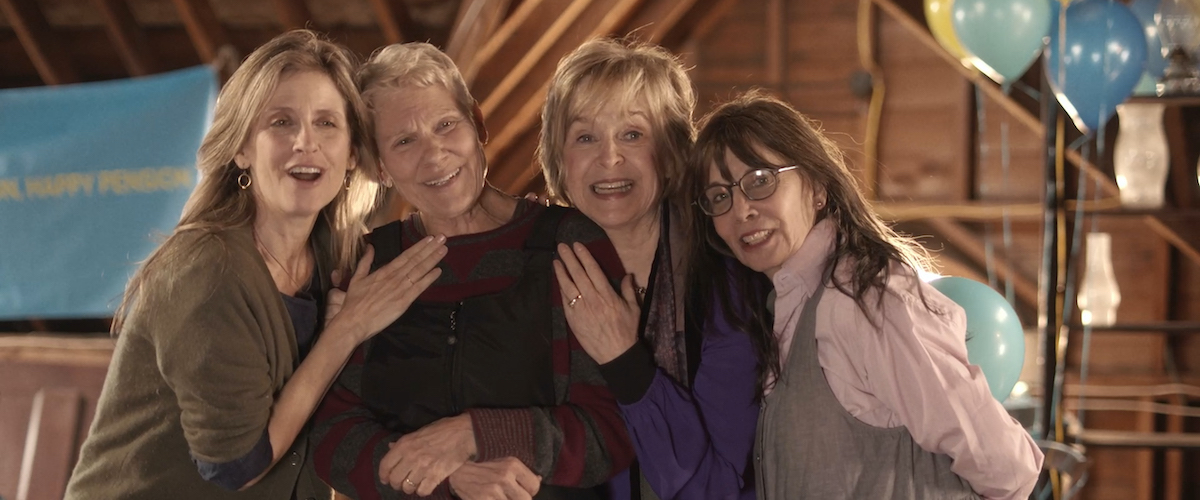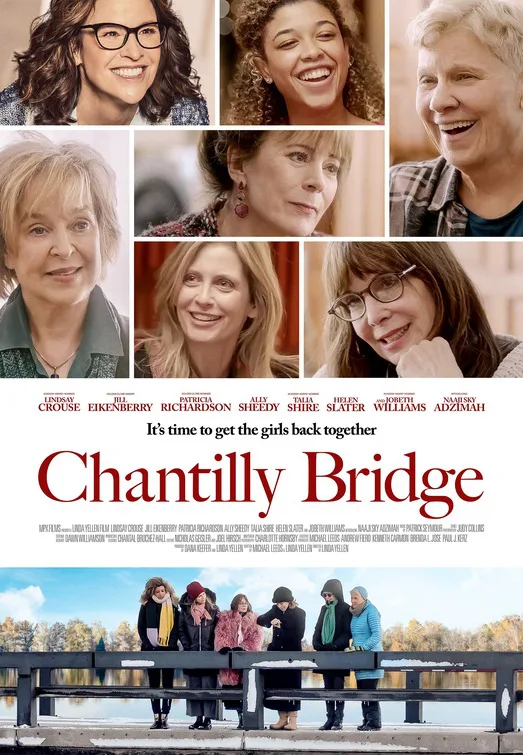“Chantilly Bridge” continues the story of the characters in the 1993 film “Chantilly Lace,” about a group of friends gathering three times at a cabin in the Colorado Rockies. The first time was a surprise 40th birthday party for Natalie (JoBeth Williams), and the last was her memorial, with the video farewell she recorded to tell her friends how much they meant to her. Director Linda Yellen shot the film over just eight days, based on a 40-page outline rather than a full script, so that the all-women cast could work together to develop their characters. It was rare then, as it is now, to have an all-female cast (except for a brief appearance by a pizza delivery boy who ends up in bed with one of the women). And it was and still is a pleasure to see a film that gives actresses characters and storylines that do not reflect or depend on the men in their lives.
As they were facing middle age, we saw them struggle to resolve conflicts, but they never doubted the strength of their connection to each other or the value they placed on their friendship. Clearly, they felt more at home with each other than with anyone else in their lives. And it was clear that the actresses who helped make the film relished the opportunity to create more complicated and authentic characters than what they were offered in Hollywood.
Thirty years later, Yellen has re-assembled the cast, even Williams, who returns in archival footage and, jarringly, provides narration from the afterlife. She is the one who tells us the reason for the title of this sequel, with a quote from Thornton Wilder: “There is a land of the living and a land of the dead. The bridge is love, the only survival, the only meaning.” There is another Natalie (Naaji Sky Adzimah). Her mother (Helen Slater as Hannah) was pregnant in the first film, and she named her daughter after the friend who died. Another addition to the cast is Patricia Richardson as Shelly, the sister of the original Natalie. Their mother, Ruth, an actress, has died, and the friends have gathered to help her sort through the house and get it ready to be sold.
This gives the friends a chance to sort through old memories and renew their connection at a time when they no longer feel that they have “endless possibilities” and must consider the consequences of their choices and the resonance of their disappointments. The autumn colors of the trees, songs by Judy Collins, and the flickers of these younger faces in archival moments from the first film echo the elegiac tone and theme of the consolation of beauty as life dims and decays.
Maggie (Talia Shire) is still a nun but has switched to a different order and specialty. She will be working with hospice patients and their families. Rheza (Lindsay Crouse), whose greatest satisfaction has been working with animals, is ending her career at a zoo. Val (Jill Eikenberry) has survived cancer and struggles with her relationship with her younger sister Liz (Ally Sheedy). Hannah and her daughter have difficult conversations about whether Hannah should have wanted more than making her family the center of her life and whether the young Natalie should be so quick to break up with her boyfriend because she never wants to have children.
Oddly, two of the film’s most vivid characters are those we never see. As Ruth’s belongings are sorted and packed up, we get a sense of her from some of her clothes and furnishings and the stories the characters tell about her. Those who remember the first film will recall that it begins with Williams as Natalie on the phone with her mother. Though we only hear one side of the conversation, we get a sense of Ruth as theatrical, often critical, and concerned with appearances. One of the highlights of this film is hearing Hannah describe being directed by Ruth in a high school play.
And then there’s the father of young Natalie, who is married to Hannah and was once married to the Natalie of the first film. In both movies, we get a sense of him as difficult and demanding from how he is described.
The characters talk about how devoted they are to each other more than they show it. They are comfortable being honest with one another about what is bothering them and, more compellingly, unconditionally supportive. But they are better at evoking the kinds of in-jokes and easy laughter of old friends than conveying the intimacy of genuine connection.
Now playing in theaters and available on VOD.




















